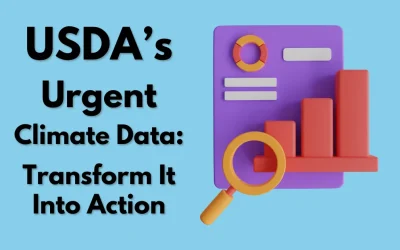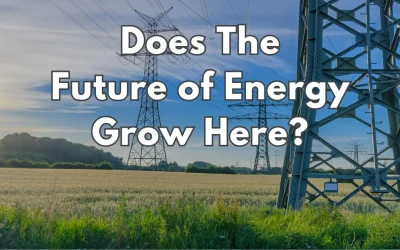Carbon dioxide (CO2) is a naturally occurring greenhouse gas that plays a crucial role in the Earth’s carbon cycle and supports life on our planet. However, the sharp increase in CO2 levels due to human activities has led to significant environmental challenges, particularly in relation to climate change. This article explores the dual nature of CO2—its benefits and problems—while highlighting activities that produce CO2, the importance of reducing atmospheric CO2, and the innovative solutions offered by Dynamic to capture and sequester CO₂ for the long term.
The Role of CO2 in the Natural World
Benefits of CO2
CO2 is essential for life on Earth. Plants, algae, and some bacteria rely on CO2 for photosynthesis, a process that converts sunlight into energy. During photosynthesis, plants absorb CO2 from the atmosphere through tiny pores in their leaves called stomata. They use sunlight to transform CO2 and water (H2O) into glucose, a form of sugar that provides energy and serves as a building block for plant growth. Oxygen (O2) is released as a byproduct, which is vital for the survival of most living organisms, including humans.
Increased levels of CO2 can sometimes enhance plant growth, a phenomenon known as the “CO2 fertilization effect.” Under certain conditions, higher CO2 concentrations can lead to increased photosynthesis, improved water-use efficiency, and greater biomass production. This has led to discussions about whether elevated CO2 could be beneficial for agriculture and forest growth.
Problems Associated with Excessive CO₂
While CO2 is necessary for plant life and the Earth’s carbon cycle, the rapid increase in atmospheric CO2 levels due to human activities has become a significant problem. This is primarily because CO2 is a potent greenhouse gas that contributes to global warming and climate change.
Key Problems of Excess CO2
- Climate Change: CO2 traps heat in the Earth’s atmosphere, leading to a rise in global temperatures. This contributes to more frequent and severe weather events, such as hurricanes, droughts, floods, and heatwaves. The disruption of global weather patterns affects ecosystems, agriculture, water resources, and human health.
- Ocean Acidification: A significant portion of CO2 emissions is absorbed by the oceans, where it reacts with water to form carbonic acid. This process lowers the pH of seawater, leading to ocean acidification, which can harm marine life, particularly organisms with calcium carbonate shells or skeletons, such as corals, mollusks, and some plankton species.
- Disruption of Ecosystems: Elevated CO2 levels and the resulting climate change disrupt natural ecosystems, leading to shifts in species distribution, loss of biodiversity, and changes in habitat conditions. This affects not only wild species but also agriculture, forestry, and fisheries.
- Health Impacts: Climate change driven by increased CO2 levels can lead to health issues such as respiratory problems, heat-related illnesses, and the spread of vector-borne diseases. Poor air quality, exacerbated by high CO2 levels, is linked to conditions like asthma and cardiovascular diseases.
Activities That Produce CO2
Various human activities contribute to the increase in atmospheric CO2. Understanding these activities is crucial for developing strategies to reduce emissions.
- Burning of Fossil Fuels: The combustion of fossil fuels (coal, oil, and natural gas) for energy production is the largest source of CO2 emissions. Power plants, transportation (cars, trucks, airplanes, ships), and industrial processes like cement and steel production are major contributors.
- Deforestation: The clearing of forests for agriculture, logging, and urban development releases stored carbon back into the atmosphere as CO2. Forests act as carbon sinks, so their destruction not only adds CO2 but also reduces the planet’s capacity to absorb it.
- Agriculture: Agricultural practices, including the use of synthetic fertilizers and soil management, can release CO2 stored in soils. Additionally, land-use changes for agriculture often involve deforestation, further contributing to CO2 emissions.
- Waste Management: The incineration of waste materials, especially plastics, and the decomposition of organic waste in landfills, releases CO2 into the atmosphere.
Why Reducing CO2 is Essential
Reducing CO2 emissions is critical for mitigating the negative impacts of climate change and ensuring a sustainable future. The key reasons include:
- Stabilizing Global Temperatures: By reducing CO2 emissions, we can slow the rate of global warming and prevent the most catastrophic effects of climate change, such as extreme weather events, sea-level rise, and loss of biodiversity.
- Protecting Ecosystems: Lowering CO2 levels helps preserve natural ecosystems, which are vital for maintaining biodiversity, providing clean air and water, and supporting agriculture and fisheries.
- Improving Human Health: Reducing CO2 emissions improves air quality, reducing the incidence of respiratory diseases and other health conditions related to pollution and climate change.
- Economic Stability: Addressing CO2 emissions helps avoid the economic disruptions caused by climate change, including damage to infrastructure, increased healthcare costs, and loss of agricultural productivity.
How Plants Use CO2
Plants play a crucial role in the Earth’s carbon cycle by absorbing CO2 during photosynthesis. This process not only supports plant growth but also helps regulate atmospheric CO2 levels. However, while increased CO2 can enhance plant growth under certain conditions, the broader effects of climate change—such as extreme temperatures, droughts, and changing precipitation patterns—can negate these benefits and stress ecosystems.
Dynamic’s Plan for CO2 Capture and Sequestration
Dynamic offers an innovative solution to capture and sequester CO2 for the long term. Our proprietary approach involves growing a specific plant species that is highly efficient at absorbing CO2 from the atmosphere. This plant is cultivated near the sources of CO2 emissions, ensuring that the carbon is captured as close to the point of release as possible.
Biochar Production and Use
The captured carbon is then converted into biochar, a stable form of carbon that can be sequestered for centuries or even millennia. Biochar is produced through a process called pyrolysis, where organic material is heated in the absence of oxygen. This process locks carbon into a solid form, preventing it from returning to the atmosphere.
Biochar has several additional benefits:
- Soil Improvement: When added to soils, biochar enhances soil fertility, improves water retention, and promotes healthy microbial activity. This leads to better crop yields and reduces the need for chemical fertilizers.
- Carbon Sequestration: Biochar is a highly effective way to sequester carbon. Unlike other forms of organic matter, which decompose and release CO2 back into the atmosphere, biochar remains stable in the soil for long periods, providing a long-term carbon sink.
- Waste Management: The production of biochar can utilize agricultural residues, forestry waste, and other organic materials that would otherwise decompose and emit CO2 or methane (a more potent greenhouse gas). By converting these materials into biochar, we not only sequester carbon but also reduce overall greenhouse gas emissions.
- Sustainable Agriculture: Using biochar in agriculture supports sustainable farming practices by reducing the reliance on chemical inputs, enhancing soil health, and improving crop resilience to climate-related stresses.
Final Thoughts
CO2 is a fundamental component of the Earth’s carbon cycle, necessary for plant life and the regulation of atmospheric conditions. However, the rapid increase in CO2 levels due to human activities poses significant challenges, particularly in the form of climate change and environmental degradation.
Reducing CO2 emissions and finding sustainable ways to capture and sequester CO2 are essential for mitigating these challenges. Dynamic’s innovative approach, which involves growing a proprietary plant species and producing biochar, offers a promising solution for long-term carbon sequestration. This approach not only addresses the need to reduce atmospheric CO2 but also provides additional benefits for soil health, sustainable agriculture, and waste management. By adopting such solutions, we can work towards a more stable and sustainable future for our planet.





